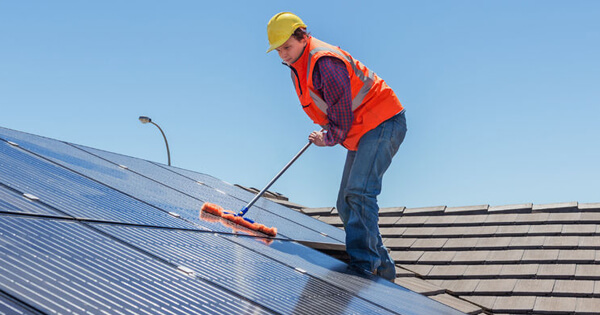Investing in solar power is a big decision as many have to consider whether the initial investment will warrant the energy-savings. Taking into account the resilience of solar panels and longevity of the system, we’ve concluded that it’s definitely a worthwhile investment.
How long do solar panels last?
Understandably there will be variations in solar panel lifespans from manufacturer to manufacturer depending on the quality of build and materials. Typically a solar panel’s design life is 25 to 30 years. What you need to take into consideration when looking at this solar power system is the degradation rate of solar panels. This will determine your energy output as time goes on.
Degradation rate of solar panels
Essentially the degradation rate of your solar panel is the rate at which the solar panel loses efficiency over time. The typical degradation rate of quality-made solar panels is roughly 1% per year, although often it is even less than that. This means that in 25 years of use the majority of your solar panels will operate above 75% efficiency, which is a fair amount.
Solar panel warranties explained
A good indication of the lifespan of any equipment is the warranty the manufacturer is willing to give the consumer and with solar panels it’s generally 25 years. What this means for you is that the solar panels you invest in will operate very near peak efficiency (about 80%) for 25 years. Thereafter while there might be degradation the solar panels will most likely still supply you with a significant amount of energy. Outside of the solar panel warranty is the workmanship warranty – offered by certain installers – which covers any installation defects.
How to extend the life of your solar power system
As with any technology, he better you care for the equipment the longer you will enjoy the maximum benefits of the equipment. When it comes to solar power the solar panel is actually your most durable asset unlikely to suffer from massive degradation. Firstly, the best way to ensure solar power longevity is to use a reliable manufacturer and installer. Secondly, when your solar power system has been installed, make sure you inspect the system thoroughly upon installation as this is key to system longevity. Thirdly, there are three primary elements to a solar power system which you should regularly maintain.
- Inverter maintenance
The lifespan of an inverter is about 10 years – for most grid-tie inverters – which is why warranty extensions are often a good investment for inverters. Just check that the warranty covers the cost of the equipment and labour as well. Off-the-grid inverters tend to have a shorter lifespan of up to five years, which means you will likely replace the inverter a few times before replacing the solar panels. Annual preventative maintenance is a must to ensure consistently reliable output.
- Battery maintenance
The highest cost of maintenance and replacement on a solar power system is the battery, particularly with off-the-grid systems as these cycle continuously. There are various types of batteries for solar power backup, the most common being VRLA or Lithium, with a design life of 5-10 or 15 years respectively.
- Panel maintenance
Largely overlooked, solar panel maintenance is a key factor to efficient output production. Dust and leaves can build up on panels, causing shady spots and effecting the panels ability to harness the sun’s energy. Believe it or not, but Temperature can also reduce a solar panel’s efficiency. Cooler panels produce better than hot panels and so some sites install sprinkler systems to keep their panels cool and clean.
As technology develops, so will the lifespan of the solar equipment. However, as it stands, solar panels are already advanced and offer consumers a great investment option. If your energy needs increase, you may need to invest in more solar panels at a later stage so ensure the inverter you buy now is scalable.
Share this Post

